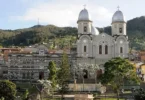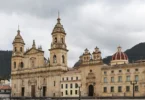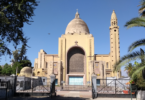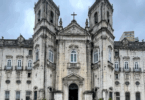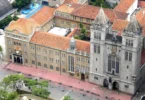Introduction
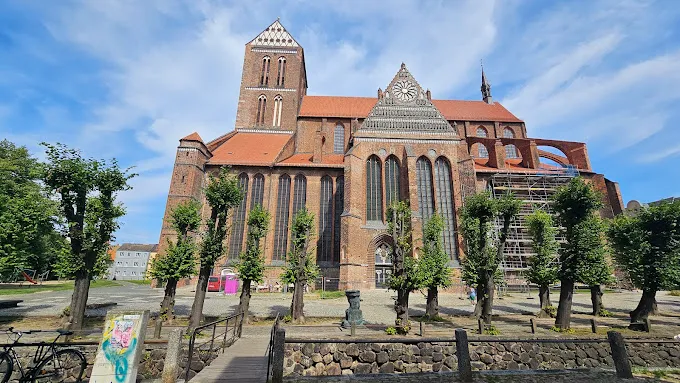
St Nicholas of Wismar was built from 1381 until 1487 as a church for sailors and fishermen. St Nicholas is one of the finest testaments to mediaeval brick architecture in northern Germany. Based on the design of Marienkirche (St Mary’s) in Lübeck it is the second highest brick basilica church in the world after St Mary’s of Lübeck. St Nicholas along with St Mary’s and St George’s is one of the three great churches that dominate the skyline of the city of Wismar. As part of Wismar’s historic centre, it was inscribed on the UNESCO World Heritage List in 2002.
The church of St. Nicholas, founded in the 14th century, is the only one of the city’s three large parish churches that survived World War II. Its central nave, 37 metres high, is the second highest Gothic brick church in the world after the Lübeck Marienkirche.
The term Weihnachtsmann is a very generic German term for Father Christmas, St. Nicholas, or Santa Claus. The German Weihnachtsmann is a fairly recent Christmas tradition having little if any religious or folkloric background.
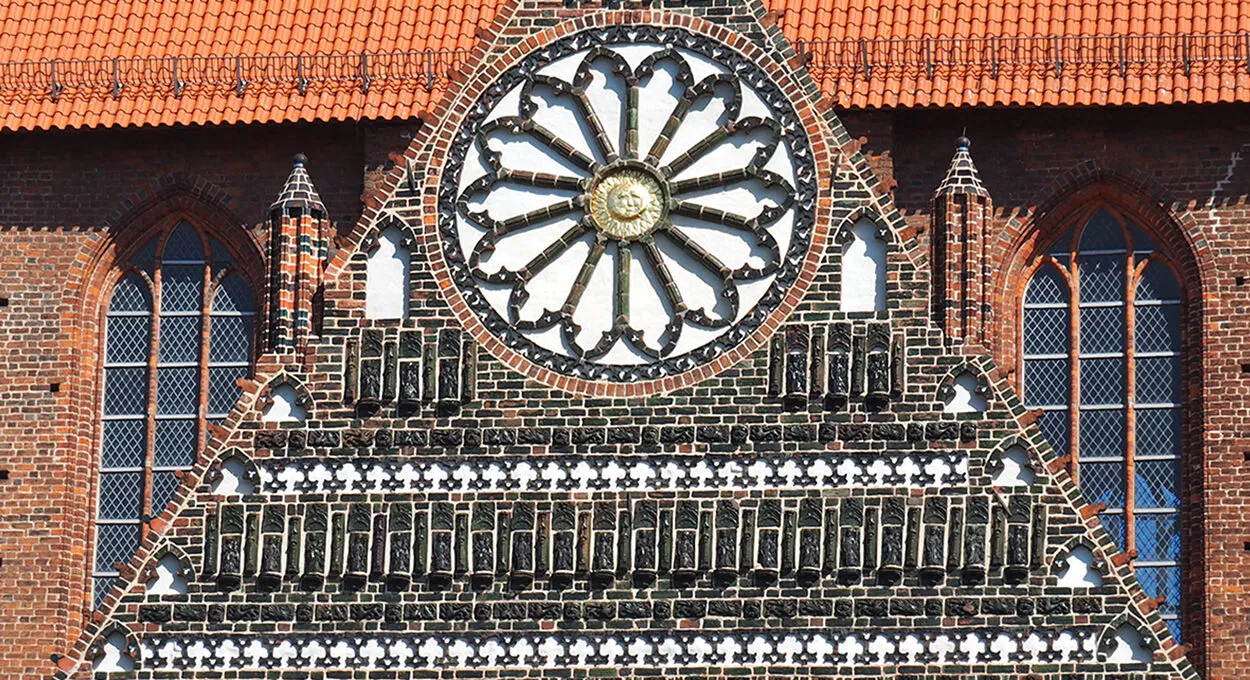
St. Nicholas’ Church (“St. Nikolai”) was built in the 14th and 15th centuries as a church for seafarers and fishermen and stands on one of the oldest artificial watercourses in Germany, the Frische Grube. St Nicholas’ Church is the only one of the three large city parish churches to have survived the Second World War intact.
In 1226, the city of Wismar was founded. By 1255, St. Nicholas’ Church was first documented. In 1270, new construction at the church was noted in a dispatch. Major alterations began in 1370, including the addition of a choir ambulatory, inspired by St. Mary’s Church in Lübeck. The chancel was consecrated in 1403, and by 1434, the construction of flanking aisles, annexes, and naves was completed. The church was consecrated in 1459, and work on the spire started in 1508.
The Reformation began in 1517, with Heinrich Never bringing it to Wismar in 1523. Wismar was captured in 1632 and remained under Swedish control until 1803. In 1703, the spire collapsed during a severe storm, causing significant damage to the roof, vaulting, decoration, and furnishings of the nave. The nave was revaulted in 1867, followed by a complete renovation in the neo-Gothic style by 1890. Remarkably, St. Nicholas’ Church was the only large church in Wismar to remain undamaged by the war in 1945. In 1975, the Mende organ from Freiberg, Saxony, was installed in the church. By 1989, St. Nicholas’ Church had become a platform for political protest in Wismar. Finally, in 2010, a new organ in the choir was consecrated.
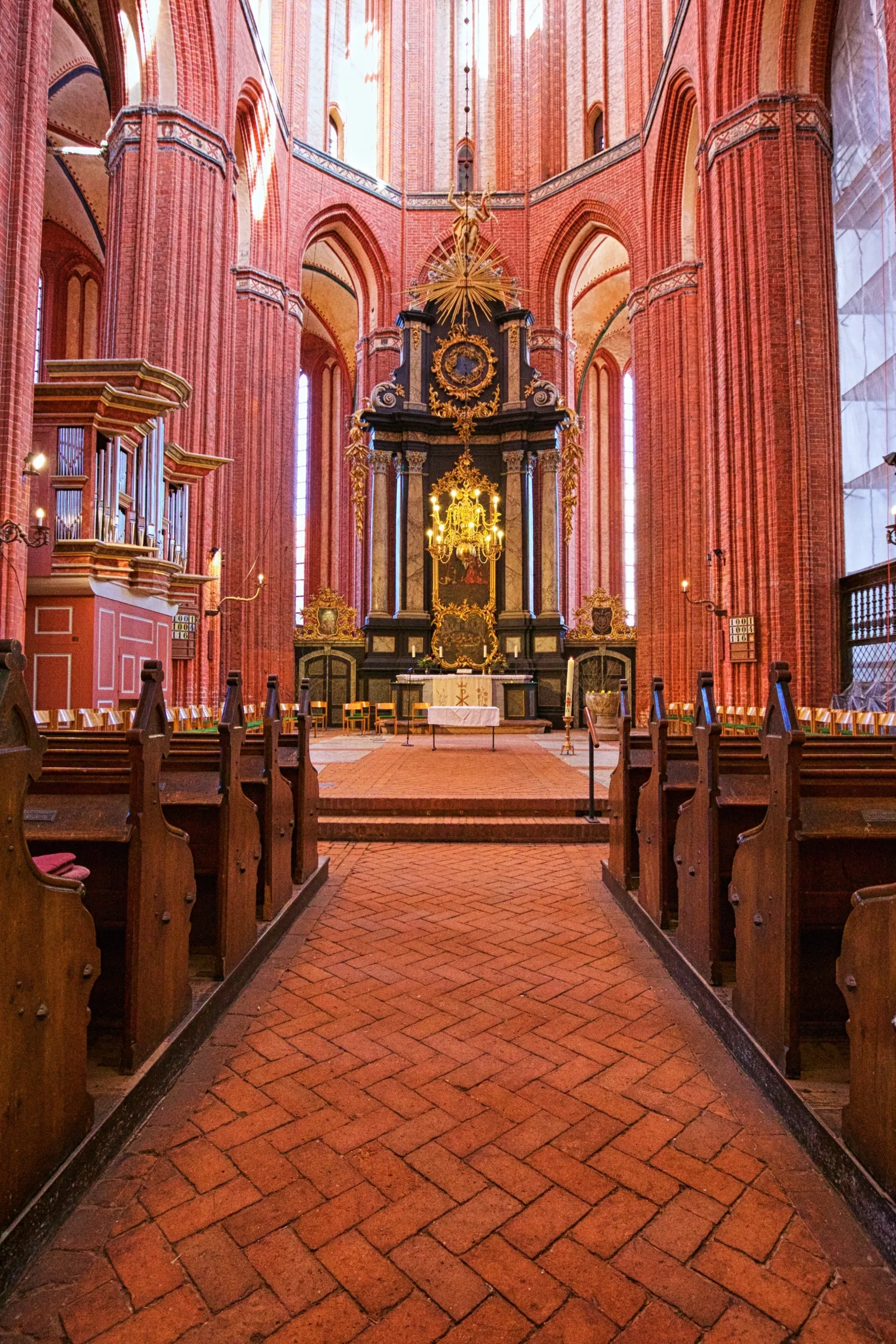
Architectural Style: Brick Gothic
The gable of the southern transept is covered with decorations of glazed terracotta. There is a large and sophisticated blind rose window with a golden sun in the center. There are galleries with an abundant number of relief sculptures of saints and kings. Both eastern edges of the tower are decorated with squared limestone.
The high altar, dating from the late Baroque period around 1774, is a notable feature of St. Nicholas’ Church. The choir organ and the triumphal cross, from the 15th century, add historical depth to the church’s interior. The pulpit, created in 1708 by Johannes von Rehn, is a fine example of Baroque craftsmanship. The Mende Organ, constructed by Johann Gottlob Mende (1787-1850), features a Renaissance-era casing with Baroque enhancements. A bronze baptismal font from 1335, originally from St. Mary’s Church, depicts scenes from Jesus’ life and the parable of the wise and foolish virgins. The southside chapel houses the high altar and the triumphal cross from St. George, both dating around 1430. Also present is a bronze burial slab from 1504, honoring Duchess Sophie von Mecklenburg. Of the 38 former native altars, the Mariner’s Altar is the only one that remains in St. Nicholas.
Built as a church for sailors and fishermen, the St-Nikolai-Kirche is irrevocably tied to the maritime legacy of Wismar and the Baltic Coast. Founded in the 14th century and still in use as an Evangelical Lutheran church, it has one of the tallest naves of any church in Germany and is awe-inspiring for every visitor. This example of the magnificent brick gothic style defines religious architecture in Wismar and throughout the Baltic. Note its interior that was redone in a Baroque style during the height of Wismar’s power as part of the Hanseatic League.
Enter the nave through the massive front doors and gasp at the incredible height of the ceiling. The effect is thrilling. As you walk down one of the three aisles, watch for the signs of the church’s celebration of Wismar’s maritime history, from model boats to portraits of the great seamen who sailed from the port. Dawdle in the southern gable and the southern lobby, whose friezes are renowned examples of local workmanship. Admire the craftsmanship of a 15th-century Triumphal Cross and of St. George’s altar, one of the tallest on the Baltic Coast, which was rescued and brought here for safekeeping during the destruction of World War II.
Duck your head into the “Winter Church” under the tower, a smaller, warmer space that allows the church to be used during the colder months. Exit through the front, but take time to walk around the outside of the building. Relax under the linden trees in the attached courtyard beside a small canal, a favorite spot among locals, as you gaze up at the improbably tall windows that lend the church its massive, imposing style.
The St. Nicholas Church from the 14th and 15th centuries was built as a church for sailors and fishermen and stands on one of the oldest artificial waterways in Germany, the Frische Grube. It is the only one of the three large city parish churches that survived the Second World War unscathed.
The central nave is 37 metres high, almost as high as St Mary’s Church in Lübeck. It is the second highest central nave in any brick Gothic religious building. A special feature are the porches that protrude on the north and south sides, which resemble the arms of a transept. The extraordinarily richly decorated south gable, with its abundance of glazed figurative moulded stones, occupies a special position in brick architecture.
The only remaining medieval furnishings in St. Nicholas’ Church are the granite baptismal font from the late 13th century and the ship’s altar from the early 16th century. However, the interior is characterized by the completely preserved Baroque furnishings.
Reconstruction of the basilica began in 1919, directed by the Historical Monuments Commission. Emile Brunet was charged with reconstruction. As a first step about 3,000 cubic metres (110,000 cu ft) of cut stone and rubble were cleared by German prisoners of war. Some further damage was caused to carvings and decorations in the process. Specialized workers undertook urgent reinforcements of masonry, and parts of damaged sculptures were stored for later restoration. A temporary roof was built to protect the structure from weather, covered by fibro-cement and Ruberoid sheeting.
It took 25 years to complete the basic restoration. The surviving 13th-century stained glass windows were reinstalled in 1948, with modern windows made by Hector de Pétigny (1904–92) to replace those that were missing, The restored basilica was reopened for worship in 1956. The steeple over the transept crossing was only finished in 1983. Further restoration work was undertaken in 2006 to clean the walls and restore the gatehouse to its state at the end of the 17th century.
Feast Day
Feast day : 6th December
Nicholas Day, celebrated on December 6, honors St. Nicholas, the 4th-century bishop of Myra.
Church Mass Timing
Yet to Update
Church Opening Time:
Monday to Saturday : 10.00am -04.00pm
Sunday : 11.30am -04.00pm
Contact Info
Address :
St.-Nikolai-Kirchhof 15, 23966 Wismar, Germany
Phone : +49 3841 213624
Accommodations
Connectivities
Airway
Rostock (RLG) Airport to St. Nicholas Church in wismar distance is 54.8 km (2h 14 mins)away.
Railway
Wismar to St. Nicholas Church distance 6 min (1.8 km) via Dahlmannstraße.


